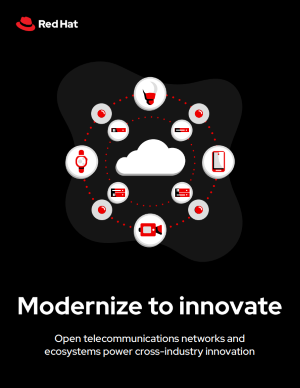What is 5G?
5G refers to the 5th generation of mobile networks. It’s designed to augment existing 4G networks with a goal to be the universal mobile connectivity technology. Each generation is defined by several factors, like the technology used, the amount of time between sending and receiving a signal (latency), and the speed of data transmission over a network to connected devices. 5G networks exhibit data-transmission speeds of up to 10Gbps. This means enhanced user experiences, new business services that can drive economic growth, and innovation to deploy bandwidth-intensive applications.
What can 5G do and why is it important?
The additional bandwidth and improved speeds of 5G make it possible to deliver improved consumer and business services, like access to rich multimedia content and personalized experiences. 5G supports large numbers of connected devices, such as sensors and wearables. For business users, 5G can meet stringent performance and availability requirements needed for industrial manufacturing and production processes.
Telecommunications service providers are upgrading their networks to support 5G connectivity and meet the increasing demand for diverse new services:
Fixed wireless access
Fixed wireless access (FWA) is the provision of wireless broadband connectivity for stationary devices, like smart TVs, personal computers, and gaming consoles. It uses radio signals to deliver high-speed internet access to subscribers, typically over short distances. FWA lets service providers extend their reach, improve connectivity, and compete in the rapidly evolving telecommunications landscape. Examples of FWA include establishing broadband connectivity in rural areas where deploying a wired broadband network is cost-prohibitive, or deploying in education or healthcare facilities to provide internet access to underserved areas.
Virtual and augmented reality and gaming
Virtual and augmented reality (VR/AR) need low-latency connectivity to deliver real-time data-streaming services consistently. 5G uses high-frequency radio waves that transmit signals faster than previous generations could, improving both bandwidth and latency.
Autonomous and connected vehicles
Using real-time connectivity, 5G helps traffic signals manage intersections more efficiently by detecting approaching cars. Wider access to 5G speeds also better supports edge devices optimized for 5G, like self-driving cars that communicate with other vehicles.
Smart agriculture
By 2050, farmers will need to feed 9.8 billion people using the same amount of land that feeds 7.8 billion today. 5G can increase efficiency by letting farmers guide autonomous farm equipment like tractors and harvesters, use sensors to track cattle, and operate drones to detect changes in plant health, soil quality, and moisture. This intelligence helps farmers use the exact amount of pesticide, water, or fertilizer to minimize waste and maximize resources.
Telemedicine
With the help of 5G, physicians can use virtual reality to treat patients in other locations, extending healthcare to those who can’t travel. Also, artificial intelligence (AI), empowered by 5G, gives physicians instant access to large amounts of medical data. This helps medical staff make diagnoses and devise treatments more quickly and accurately.
Industry 4.0 and retail
As Industry 4.0, or smart manufacturing, becomes a reality, enterprises that want to maintain or increase their competitive advantages must take action to align their technological capabilities with this new environment. 5G technologies, along with open hybrid cloud architectures, will play an important role in the emergence of Industry 4.0 and the digital transformation of manufacturing.
What about the other network generations?
We’ve come this far through decades of continually building on previous mobile network generations. The 1st generation, or 1G networks, emerged in the late 1970s, providing a maximum speed of just over 2Kbps. 2G arrived in the early 1990s, with speed increasing to around 200Kbps. 3G made an appearance in the mid-2000s, rocketing speeds to 40Mbps. In 2010, 4G was revolutionary in terms of performance, offering speeds of up to 100Mbps, and is still the dominant mobile technology.
What can 5G network equipment providers offer?
Dozens of providers offer 5G now, some who are Red Hat® partners. 5G technology fosters greater opportunities but requires partnerships to create success. Red Hat brings together a vibrant ecosystem that can cultivate innovation and address a variety of business challenges, including network infrastructure, hybrid and multicloud strategies, artificial intelligence and machine learning (AI/ML), and more.
What is 5G Advanced?
5G Advanced is a new 5G standard with upgraded capabilities, and is expected to be established in 2024 by the 3rd Generation Partnership Project (3GPP). 5G Advanced aims to maximize mobile coverage and improve power efficiency.
What is 6G?
As of 2024, the 3GPP has begun the process of developing the 6G standard. 6G is expected to make use of new radio spectrum, the lower and upper centimeter wave bands and sub-THz/THz bands, to deliver higher peak data rates, according to a report from the Next G Alliance, a North American telecommunications industry group. Discussions around 6G and its potential capabilities are just starting.

